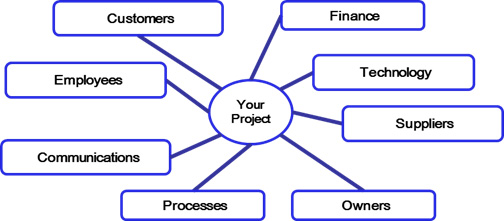Projects Always Require Change

What is your reaction to the title? Some people will think about different projects and try to identify one which, for them, does not require change. “Suppose”, someone might say, “If the project is the purchase of a major item and is regarded as a project even though it is a repeat item, what changes are there?”
In the ensuing discussion, the key point is that a repeat purchase of a substantial item, whether that is a refinery, a plane, or an IT package, will require change within the organisation.
This is because no two items of this size are truly identical, and changes will be involved. For example, the buying organisation will have to change to cope with maintaining and running the new acquisition. Given the size of the acquisition, running and maintaining it will be different in some ways from running and maintaining the earlier acquisitions. So the people involved will have to learn about, for example, the different plane in order to fly it, staff it, feed the passengers on it, and maintain it. And the passengers – the customers – might also have to change through booking arrangements, access, on-board luggage, and safety. So the organisation will need new processes and the staff will have to change their ways of working in some way.
You can apply similar arguments to all projects. Therefore change is required for two reasons: organisations have to change in order to cope with market developments; and further changes are required to cope with the maintenance and operation of any new acquisitions. These affect everyone in the organisation and beyond: staff, the whole supply chain, customers, and shareholders as well as anyone involved less directly.
When you consider your own projects, ensure that you have thought through the effect on everyone involved. Ensure that you take into account all of the changes that will be needed. Build time into the overall plan to allow for these changes, as all projects involve change.
